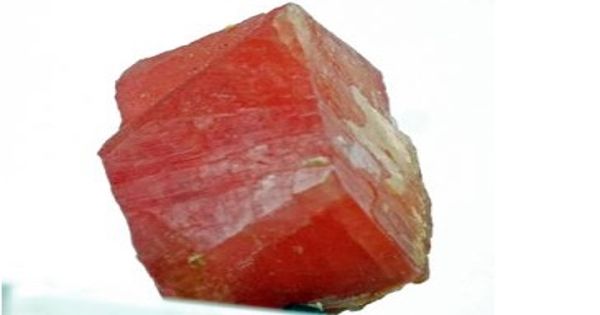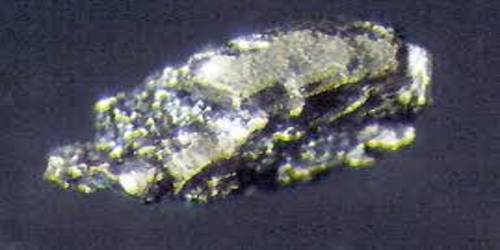Nambulite is a triclinic-pinacoidal reddish orange-brown mineral containing hydrogen, lithium, manganese, oxygen, silicon, and sodium. It is a lithium-bearing manganese silicate mineral with the formula: (Li, Na)Mn4Si5O14(OH). It is named after the mineralogist, Matsuo Nambu (born 1917) of Tohoko University, Japan, who is known for his research in manganese minerals.
The mineral was first discovered in the Funakozawa Mine of northeastern Japan, a metasedimentary manganese ore.
General Information
- Category: Inosilicate
- Formula: (repeating unit) (Li,Na)Mn4Si5O14(OH)
- Crystal system: Triclinic
- Crystal class: Pinacoidal (1) (same H-M symbol)
- Color: Reddish orange brown.

Properties
In a medium with an index of refraction equaling 1.53, Nambulite has a calculated relief of 1.71–1.73, giving it a moderate to high relief. Relief is a measure of the difference between the index of refraction of the mineral and that of the medium.
- Formula mass: 612.13 g/mol
- Crystal habit: Prismatic
- Twinning: infrequent
- Tenacity: Brittle
- Mohs scale hardness: 6.5
- Luster: Vitreous – adamantine
- Streak: Pale yellow
- Diaphaneity: Transparent to translucent
- Specific gravity: 3.51
- Optical properties: Biaxial (+)
Occurrence
Nambulite is a rare mineral reported in crystals up to 8 mm long at the Tunakozawa Mine, Northeast Japan. These crystals are found in veins cutting manganese oxide ores. Much larger crystals, up to approximately 3 cm across, have more recently been found in Namibia, at the Kombat Mine, near Tsumeb.
Nambulite is formed from the reaction between a hydrothermal solution and rhodonite, and commonly creates veins in the host rock. Other than a collector’s gem, however, it has little economic value.
Information Source:
















